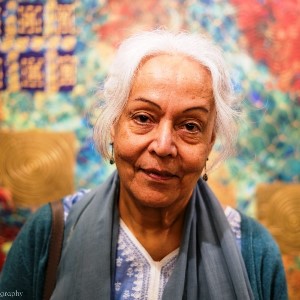The disturbing rise of Hindutva supremacism in India has been mirrored by a corresponding growth of extremism in the Indian diaspora, particularly in the UK where the efforts of such groups are now feeding into public policy decisions, says Amrit Wilson.
In the six weeks or so before UK’s 2019 general election, WhatsApp messages started circulating urging UK’s Hindus to vote Tory, claiming the Labour Party was anti-Indian for criticising Modi’s policies in Kashmir. Soon after, in the Gujarati Hindu heartlands of Leicester, Harrow and Brent leaflets dropped through people’s doors emphasising this message. Then, with just over two weeks left till election day, a spokesperson for the Hindu Council made a statement in support of Rabbi Mirvis’ claim that Labour Party is anti-Semitic, adding that it is ‘anti-Hindu’ too.
It was a very public flexing of muscles and declaration of position by Hindu far-right groups who, as their interventions indicated, are directly linked to the Modi regime. To understand them we must look at the Bharatiya Janata Party (BJP) and the Sangh Parivar, the family of Hindu supremacist organisations (including killer gangs, cow vigilantes, cultural and students’ organisations and women’s wings) to which the BJP belongs, and in particular at the Rashtriya Swayamsevak Sangh (RSS), the authoritarian, militarist, cadre-based organisation which controls this sinister family.
The pivot around which the Hindu far-right revolves
People often hesitate to use the word fascist but it is the only accurate description of the RSS. Established in the 1920s, in Nagpur, in Maharashtra, in opposition to India’s anti-colonial movement, it is the pivot around which the Hindu far-right groups in India, and also Britain, revolve. It provides ideological direction, as well as leaders. Narendra Modi, for example, is a life-long RSS member, as is his powerful Home Minister, Amit Shah, most BJP cabinet ministers and Chief Ministers of BJP ruled states. In Britain many leaders of organisations allying with the BJP are members of the HSS, its overseas wing.
The RSS was modelled on Mussolini’s Black Shirts and inspired by the Nazis. Its views on religion are drawn from the ‘scriptural’ and elite-based interpretations of Hinduism encoded by British colonialism, and their deliberate policies of divide-and-rule in response to the first war of independence of 1857. It has also adopted the strategic British rewriting of Indian history as an age-old struggle between Hindus and Muslim ‘invaders’. These distorted ideas of religion and history together with some basic tenets of European fascism have helped shape the Islamophobic and misogynistic notion of Hindutva which, though sometimes mistaken to be a religious philosophy, is in fact the political ideology of Hindu supremacy.
Like many other fascist organisations, the RSS wishes to extend its territory creating a right-wing Hindu Indian state or Akhand Bharat extending across South Asia and swallowing up Pakistan, Bhutan, Nepal, Bangladesh, Afghanistan and Myanmar. It also aims to establish a world community of right-wing Hindus.
In 1947, it set up one of its earliest, and in hindsight, most fruitful overseas outposts in the heart of the Hindu immigrant community in Nairobi in Kenya. The Nairobi RSS branch successfully drew in the Gujarati community, who were mainly from a rural background and eager like many immigrants to set in stone the deeply conservative traditions they had brought with them.
When East African Asians started arriving in Britain in large numbers as a result of the Africanisation policies in Kenya, Uganda, Tanzania and Malawi, RSS branches sprung up in cities like Leicester, Birmingham, Bradford and in Harrow and Brent in London where the refugees had settled.
East African Asian communities and their changing identities
The new communities had brought with them their view of the world and the intense racism against people of African origin, However when they entered Britain they faced blatant racism. Stripped of their wealth and status, the men tried, often unsuccessfully, to get white collar work, while the women, who had rarely worked outside their homes and communities were forced to take up the lowest paid, most unpleasant jobs in small factories and sweatshops simply to make ends meet.
One woman I interviewed was both bemoaning the loss of her class privileges in East Africa, and angry at her exploitation as a low-paid worker in Britain. This mixture of emotions was common among the women who spoke to me. It gave rise to an intense anger and outrage which sparked and sustained the historic strikes at Imperial Typewriters in Leicester, Grunwick and Futters in Brent where women from this community were the driving force and often the leaders.
The women claimed a new-found collective identity from collectively confronting racism at work. It often involved also winning a struggle against patriarchy at home since they were largely from families and communities where menial work outside the home was looked down upon. Patriarchy dictated that even if they had to take up such jobs out of sheer necessity, they should not make this publicly visible by participating in a strike.
However, despite their self-identifying as workers, Hindutva ideologies remained rife in these communities. In the 80s and 90s, the policies of multiculturalism and later faith communities helped the Hindutva groups to flourish as never before, acquiring recognition and resources from local councils, while also heightening divisions between Hindus and Muslims, who at the time of the Grunwick and Imperial Typewriters strikes, had worked closely together.
The rise of the BJP, the corporates and the love affair with Modi’s Gujarat
Back in India the BJP had been launched in its present form in 1980 emerging from earlier right-wing Hindu supremacist parties also controlled by the RSS. In December 1992 the Babri Masjid was demolished sparking violence between Hindus and Muslims across the country which claimed some 2000 lives. It modernised its violence against Dalits and religious minorities by embedding it within the predatory neoliberal version of ‘development’ which the BJP now stood for.
But by the late 1990s the support for Modi and Hindutva was also coming from Asians from East Africa, particularly those who had once fled Uganda for Britain. President Museveni, himself, by now a neoliberal star of the Global South and admirer of Modi, paid a visit to the Swaminarayan Temple in London in 1997. All the big names of South Asian business, mostly Hindu, were present when Museveni urged more Asians to return to Uganda.
Throughout the 1990s funds were also being collected from ordinary people in communities in the UK. After the Gujarat genocide of 2002, progressive South Asian organisations in Britain exposed Sewa International for diverting funds raised for earthquake relief and channelling them to organisations directly involved in carrying out the violence.
The Gujarat genocide of 2002 and responses in the UK Gujarati Hindu community
In 2002, Modi presided over systematically organised genocidal attacks on the minority Muslim population of Gujarat. Some 2000 people were murdered and 200,000 displaced. The BJP declared that Gujarat was the ‘laboratory of Hindutva’. The genocide became a blueprint which would be repeated again against Christians in Odisha in 2008 and against Muslims in Muzaffarnagar in 2013.
Following massive protests in the UK and US and scathing criticism from international human rights organisations Modi was banned from entering the US and UK.
In 2004, a woman who had once been a militant participant in workers’ struggles and had later gone up in class, told me ‘whatever has happened [in Gujarat] is the right thing’. As I eventually called a minicab to leave her house, she warned me not to travel with a Muslim driver repeating tropes straight from the playbook of the RSS (which are very similar to those surrounding Black men in white supremacist discourse) that Muslim men and Black men are ‘beast-like’ and ‘oversexed’ and a danger to Hindu women. When I asked her about the rapes of Muslim women in 2002, she said ‘Hindu men have been too meek in the past’.
Resistance from Dalit organisations
While the intense Islamophobia stirred up by the Hindutva forces was normalised and invisibilised in Britain by the discourse of the War on Terror, their caste-based discrimination and abuse could not be so easily hidden. The everyday practice in Britain of the notion of caste led, for example, to elderly patients being refused care because ‘upper-caste’ medical professionals would not touch them, workers being sidelined or refused promotion, schoolchildren bullied for reasons of caste, and Dalits refused entry to temples.
After almost a decade of campaigning, by Dalit organisations, in 2010 a law against caste-based discrimination was effectively passed by the outgoing Labour government and eventually the Enterprise and Regulatory Reform Act 2013 imposed a ‘duty’ on the government to make caste an aspect of race in the Equality Act of 2010. However, this ‘duty’ has not yet been met. Instead, in response to the Hindu far-right’s claim that it would stigmatise the Hindu community, the Tories have all but scuppered the law. However, the struggle to end caste-based discrimination continues and so does the Hindu far-right’s angry opposition to it. A 2019 BBC film by YouTuber Parle Patel, exposed not only blatant caste-based exclusion but the attitude of Satish Sharma, the Chair of NCHT who claimed on camera that caste discrimination does not happen and that even the word caste should not be mentioned as ‘it is as toxic for us’ as the n-word. According to Sharma, caste is non-existent because ‘we do not have a hereditary, hierarchical, endogamous structure’ (in fact this is an almost textbook definition of caste). A dedicated supporter of the right-wing of the Tory party, Sharma was in 2019 suspended from Chairpersonship of NCHT for electioneering on behalf of the Conservatives after the Charity Commission raised concerns.
New faces and strategies of neoliberal Hindutva
And while Modi attempts to replicate in Kashmir the policies Netanyahu has been following in Palestine, in the UK, Zionists and Hindutva forces are increasingly working together. At a meeting at the House of Commons about the Caste law, attended among others by Satish Sharma and Conservative Party donor Lord Jitesh Gadhia, Bob Blackman (the rabidly pro-Hindutva Tory MP from Harrow East) welcomed Gideon Falter, the CEO of the Campaign Against Anti-Semitism (CAA) and called for the need to learn from the way the CAA had got the International Holocaust Remembrance Alliance (IHRA) definition of anti-Semitism passed in the Labour Party. (The IHRA definition effectively brands those who criticise Israel’s actions and policies against Palestinians as anti-Semitic). Currently, Labour leader, Keir Starmer is trying to cosy up to the Hindutva brigade, by distancing the party from a resolution in favour of Kashmiri self-determination passed by the Labour Conference under Corbyn. But no amount of pandering to Hindutva organisations is going to change the minds of the many die-hard Tory supporters and Brexiteers like Satish Sharma. They know that India’s billionaires have much to gain from post Brexit deals and they are comfortable in the knowledge that the BJP’s aims are looked after by RSS supporting Priti Patel and Rishi Sunak, whose father in law, Infosys founder and Modi admirer NR Narayana Murthy, backed Modi for his second term.
Solidarity and resistance in Britain
If the Hindutva forces have managed to insert themselves into the fabric of global capitalism and joined its facilitators in Britain, the anger of ordinary people of all faiths and none has spilled out in protests in the UK. Days after Modi came to power in May 2014, two oppressed caste girls were raped and murdered and their bodies hung from a tree in Uttar Pradesh. The grief and rage following this and Modi’s silence led to the first mass protest against the ruling BJP in which Dalit women in their thousands joined with South Asia Solidarity Group (SASG), an anti-racist, anti-imperialist organisation with a decades long record of campaigning against the atrocities committed by the Indian government.
Caste Watch UK, Britain’s largest Dalit organisation and SASG continued to work together sometimes joined by UK women’s groups and human rights organisations. On August 15, 2017, India’s Independence Day, under the banner ‘Resist the Republic of Fear’, they marched through the streets of London carrying posters of those who had been lynched; 15 year old Junaid Khan, murdered when he was returning from Eid shopping, for no reason other than he was a Muslim; Sapnil Sonewane, also 15, lynched because he was a Dalit and had fallen in love with a girl of another caste; Muhammed Akhlaq, killed in his home on the pretext that he had eaten beef; Pehlu Khan, a dairy farmer murdered by a gang of some 200 ‘cow vigilantes’ and many others.
Modi’s second term has seen the annexation of Kashmir;
the handing over of the land the Babri Masjid had stood on to a Hindutva organisation for the construction of a massive Ram temple; and in December 2019 the enactment of laws and processes which go against India’s secular Constitution and could well be the first steps towards the ethnic cleansing of India’s Muslim population. This is the last phase in the creation of a fully-fledged Hindutva fascist state and against it a massive movement of resistance has risen up, sweeping across India, its voices amplified by solidarity from across the world. In Britain, on 25 January 2020, the eve of India’s Republic Day, UK’s Indian Muslim Organisations joined hands with SASG, Caste Watch UK, and the Kashmir Solidarity Movement to march 3000 strong in solidarity with the resistance in India.
Since February this year, having taken no measures to control Covid-19, Modi hosted a huge and glittering gathering to welcome Donald Trump to India. The days that followed saw a pogrom against Muslims. When a lockdown was finally implemented, it was at four hours’ notice which left thousands of migrant workers and daily wage earners whose work sustains the cities penniless and without shelter or transport. Many have died of starvation or police brutality or simply of exhaustion. As Covid-19 spreads through India like wildfire, the BJP has heightened its Islamophobic propaganda, blaming Muslims for spreading the virus and taking advantage of the lockdown to target activists against the citizenship laws, charge them under India’s draconian and colonial anti-Terrorism law, the Unlawful Activities Prevention Act, and throw them into prison.
Meanwhile solidarity with the resistance continues unabated taking innovative forms from online concerts to raise funds for the survivors of the pogroms and migrant workers to meetings linking the voices of activists from Kashmir, India and beyond, reminding the world that Modi, like Netanyahu, Bolsonaro, Erdogan, Orban and Trump, is a fascist who must be fought and defeated and that Modi’s cheerleaders don’t speak for the majority of South Asians in this country.
NB: This article is a summarised version; for the full article, which was published in the Islamic Human Rights Commission, please contact the author at Amrit Wilson (wilson_amrit@yahoo.co.uk)







